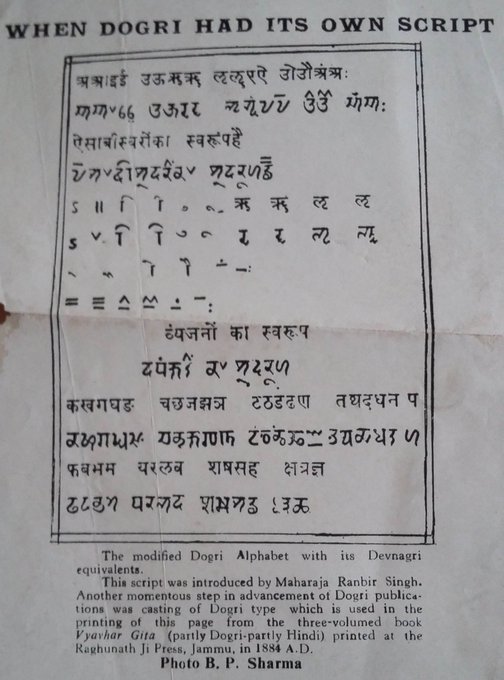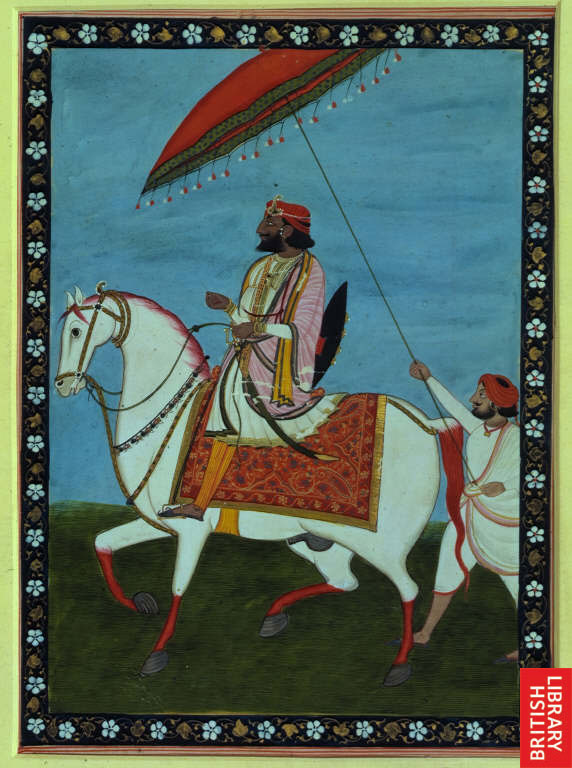|
Tankri Script
The Tākri script (Takri ( Chamba): ; Takri (Jammu/Dogra): ; sometimes called Tankri ) is an abugida writing system of the Brahmic family of scripts. It is derived from the Sharada script formerly employed for Kashmiri. It is the sister script of Laṇḍā scripts. It has another variant Dogra Takri (also known as Dogra Akkhar) employed in Jammu region. There are numerous varieties present throughout Himachal Pradesh. Until the late 1940s, the adapted version of the script (called Dogri, Dogra or Dogra Akkhar) was the official script for writing Punjabi in the princely state of Jammu and Kashmir. Throughout the history, different kingdoms of what now forms Himachal Pradesh used their own variety to maintain their records. The Takri script used in Sirmour in Himachal Pradesh and in the adjacent region of Jaunsar-Bawar in Uttarakhand has some distinction. History The Takri alphabet developed through the ''Devāśeṣa'' stage of the Sharada script from the 14th-18th centuri ... [...More Info...] [...Related Items...] OR: [Wikipedia] [Google] [Baidu] |
Abugida
An abugida (; from Geʽez: , )sometimes also called alphasyllabary, neosyllabary, or pseudo-alphabetis a segmental Writing systems#Segmental writing system, writing system in which consonant–vowel sequences are written as units; each unit is based on a consonant letter, and vowel notation is secondary, similar to a diacritical mark. This contrasts with a full alphabet, in which vowels have status equal to consonants, and with an abjad, in which vowel marking is absent, Abjad#Impure abjads, partial, or optional – in less formal contexts, all three types of the script may be termed "alphabets". The terms also contrast them with a syllabary, in which a single symbol denotes the combination of one consonant and one vowel. Related concepts were introduced independently in 1948 by James Germain Février (using the term ) and David Diringer (using the term ''semisyllabary''), then in 1959 by Fred Householder (introducing the term ''pseudo-alphabet''). The Ethiopian Semitic langu ... [...More Info...] [...Related Items...] OR: [Wikipedia] [Google] [Baidu] |
Kashmiri Language
Kashmiri ( ) or Koshur (Kashmiri: , , ) is an Indo-Aryan languages, Indo-Aryan language of the Dardic languages, Dardic branch spoken by around 7 million Kashmiris of the Kashmir region, primarily in the Kashmir Valley and surrounding hills of the Indian-administrated union territory of Jammu and Kashmir (union territory), Jammu and Kashmir, over half the population of that territory. Kashmiri has split ergativity and the unusual V2 word order, verb-second word order. Since 2020, it has been made an official language of Jammu and Kashmir (union territory), Jammu and Kashmir along with Dogri language, Dogri, Hindi, Urdu and English. Kashmiri is also among the 22 Languages with official status in India, scheduled languages of India. Kashmiri is spoken by roughly five percent of Pakistani-administrated Azad Kashmir's population. Geographic distribution and status There are about 6.8 million speakers of Kashmiri and related dialects in Jammu and Kashmir and amongst the Kashmir ... [...More Info...] [...Related Items...] OR: [Wikipedia] [Google] [Baidu] |
Brahmic Scripts
The Brahmic scripts, also known as Indic scripts, are a family of abugida writing systems. They are used throughout South Asia, Southeast Asia and parts of East Asia. They are descended from the Brahmi script of ancient India and are used by various languages in several language families in South Asia, South, East Asia, East and Southeast Asia: Indo-Aryan languages, Indo-Aryan, Dravidian languages, Dravidian, Tibeto-Burman languages, Tibeto-Burman, Mongolic languages, Mongolic, Austroasiatic languages, Austroasiatic, Austronesian languages, Austronesian, and Tai languages, Tai. They were also the source of the Collation, dictionary order (''gojūon'') of Japanese language, Japanese ''kana''. History Brahmic scripts descended from the Brāhmī script, Brahmi script. Brahmi is clearly attested from the 3rd century BCE during the reign of Ashoka, who used the script Edicts of Ashoka, for imperial edicts. Northern Brahmi gave rise to the Gupta script during the Gupta period, w ... [...More Info...] [...Related Items...] OR: [Wikipedia] [Google] [Baidu] |
Abugida
An abugida (; from Geʽez: , )sometimes also called alphasyllabary, neosyllabary, or pseudo-alphabetis a segmental Writing systems#Segmental writing system, writing system in which consonant–vowel sequences are written as units; each unit is based on a consonant letter, and vowel notation is secondary, similar to a diacritical mark. This contrasts with a full alphabet, in which vowels have status equal to consonants, and with an abjad, in which vowel marking is absent, Abjad#Impure abjads, partial, or optional – in less formal contexts, all three types of the script may be termed "alphabets". The terms also contrast them with a syllabary, in which a single symbol denotes the combination of one consonant and one vowel. Related concepts were introduced independently in 1948 by James Germain Février (using the term ) and David Diringer (using the term ''semisyllabary''), then in 1959 by Fred Householder (introducing the term ''pseudo-alphabet''). The Ethiopian Semitic langu ... [...More Info...] [...Related Items...] OR: [Wikipedia] [Google] [Baidu] |
Dogri Script
The Dogri script is a writing system originally used for writing the Dogri language in Jammu and Kashmir in the northern part of the Indian subcontinent. History The revival of the Dogra Akkhar script was supported by the order of Maharaja Ranbir Singh of Jammu and Kashmir. It is a modified version of the old Dogra Akkhar script, which in turn was a Jammu variant of the Takri script. Efforts of revival Signboards in New Dogra Akkhar were erected at Jammu Tawi railway station. However, the script is functionally extinct, with Devanagari being used to write Dogri now. Most speakers of Dogra are unable to read and write the language in its original script. Unicode Name Dogra Akkhar was added as a Unicode block to the Unicode Unicode or ''The Unicode Standard'' or TUS is a character encoding standard maintained by the Unicode Consortium designed to support the use of text in all of the world's writing systems that can be digitized. Version 16.0 defines 154,998 Char . ... [...More Info...] [...Related Items...] OR: [Wikipedia] [Google] [Baidu] |
Jammu Division
The Jammu division (; ) is a Divisions of India, revenue and administrative division of the Indian-administered Jammu and Kashmir (union territory), Jammu and Kashmir in the disputed Kashmir region.The application of the term "administered" to the various regions of Kashmir and a mention of the Kashmir dispute is supported by the WP:TERTIARY, tertiary sources (a) through (e), reflecting WP:DUE, due weight in the coverage. Although "controlled" and "held" are also applied neutrally to the names of the disputants or to the regions administered by them, as evidenced in sources (h) through (i) below, "held" is also considered politicized usage, as is the term "occupied," (see (j) below). (a) (subscription required) Quote: "Kashmir, region of the northwestern Indian subcontinent ... has been the subject of dispute between India and Pakistan since the partition of the Indian subcontinent in 1947. The northern and western portions are administered by Pakistan and comprise three areas: ... [...More Info...] [...Related Items...] OR: [Wikipedia] [Google] [Baidu] |
Chamba District
Chamba district is the northwestern district of Himachal Pradesh, in India, with its headquarters in Chamba town. The towns of Dalhousie, Khajjhiar and Churah Valley are popular hill stations and vacation spots for the people from the plains of northern India. Economy In 2006 the Ministry of Panchayati Raj named Chamba one of the country's 250 most backward districts (out of a total of 640). It is one of the two districts in Himachal Pradesh currently receiving funds from the Backward Regions Grant Fund Programme (BRGF). Demographics Population According to the 2011 census Chamba district has a population of 519,080, roughly equal to the nation of Cape Verde. This gives it a ranking of 544th in India (out of a total of 640). The district has a population density of . Its population growth rate over the decade 2001–2011 was 12.58%. Chamba has a sex ratio of 989 females for every 1000 males, and a literacy rate of 73.19%. 6.96% of the population lived in urban areas. ... [...More Info...] [...Related Items...] OR: [Wikipedia] [Google] [Baidu] |
Dogri Script
The Dogri script is a writing system originally used for writing the Dogri language in Jammu and Kashmir in the northern part of the Indian subcontinent. History The revival of the Dogra Akkhar script was supported by the order of Maharaja Ranbir Singh of Jammu and Kashmir. It is a modified version of the old Dogra Akkhar script, which in turn was a Jammu variant of the Takri script. Efforts of revival Signboards in New Dogra Akkhar were erected at Jammu Tawi railway station. However, the script is functionally extinct, with Devanagari being used to write Dogri now. Most speakers of Dogra are unable to read and write the language in its original script. Unicode Name Dogra Akkhar was added as a Unicode block to the Unicode Unicode or ''The Unicode Standard'' or TUS is a character encoding standard maintained by the Unicode Consortium designed to support the use of text in all of the world's writing systems that can be digitized. Version 16.0 defines 154,998 Char . ... [...More Info...] [...Related Items...] OR: [Wikipedia] [Google] [Baidu] |
Laṇḍā Scripts
The Laṇḍā scripts, from the term ''laṇḍā'' meaning "without a tail", is a Punjabi language, Punjabi word used to refer to writing systems used in Punjab and adjoining areas. In Sindhi language, Sindhi, it was known as 'Wāṇiko' or 'Baniyañ'. Development Laṇḍā is a script that evolved from the Sharada script during the 10th century. It was widely used in the northern and northwestern Indian subcontinent, in the Indus River plain, and adjoining areas, comprising Punjab, Sindh, Kashmir, Haryana and some parts of Balochistan and Khyber Pakhtunkhwa. It was used to write Punjabi language, Punjabi (and various Punjabi dialects like Pahari-Pothwari, Saraiki language, Multani, Hindko, Majhi dialect, Majhi, Doabi dialect, Doabi) as well as Sindhi language, Sindhi, Balochi language, Balochi, Kashmiri language, Kashmiri, and Pashto. The Laṇḍā scripts form a "typologically distinct group," and are closer in norms to its predecessor Brahmi than they are to the Nāgarī ... [...More Info...] [...Related Items...] OR: [Wikipedia] [Google] [Baidu] |
Sharada Script
The Śāradā, Sarada or Sharada script is an abugida writing system of the Brahmic family of scripts. The script was widespread between the 8th and 12th centuries in the northwestern parts of Indian Subcontinent (in Kashmir and neighbouring areas), for writing Sanskrit and Kashmiri. Although originally a signature Brahminical script created in the valley, it was more widespread throughout northwestern Indian subcontinent, and later became restricted to Kashmir, and is now rarely used, except by the Kashmiri Pandit community for religious purposes. It is a native script of Kashmir and is named after the goddess Śāradā or Saraswati, the goddess of learning and the main Hindu deity of the Sharada Peeth temple. History Sharda script is named after the Hindu goddess Śāradā, also known as Saraswati, the goddess of learning and the main Hindu deity of the Sharada Peeth temple. Although originally a script restricted to only Brahmins, Sharda was later spread thro ... [...More Info...] [...Related Items...] OR: [Wikipedia] [Google] [Baidu] |
Gupta Script
The Gupta script (sometimes referred to as Gupta Brahmi script or Late Brahmi script)Sharma, Ram. '' 'Brahmi Script' ''. Delhi: BR Publishing Corp, 2002 was used for writing Sanskrit and is associated with the Gupta Empire of the Indian subcontinent, which was a period of material prosperity and great Religion, religious and Science, scientific developments. The Gupta script was descended from Brahmi script, Brāhmī and gave rise to the Sharada script, Śāradā and Siddhaṃ script, Siddhaṃ scripts. These scripts in turn gave rise to many of the most important Indic scripts, including Devanagari, Devanāgarī (the most common script used for writing Sanskrit since the 19th century), the Gurmukhi, Gurmukhī script for Punjabi language, Punjabi, the Odia script, the Bengali-Assamese script and the Tibetan script. Origins and classification The Gupta script was descended from the Ashokan Brahmi script, Brāhmī script, and is a crucial link between Brahmi and most other Brahmi ... [...More Info...] [...Related Items...] OR: [Wikipedia] [Google] [Baidu] |


